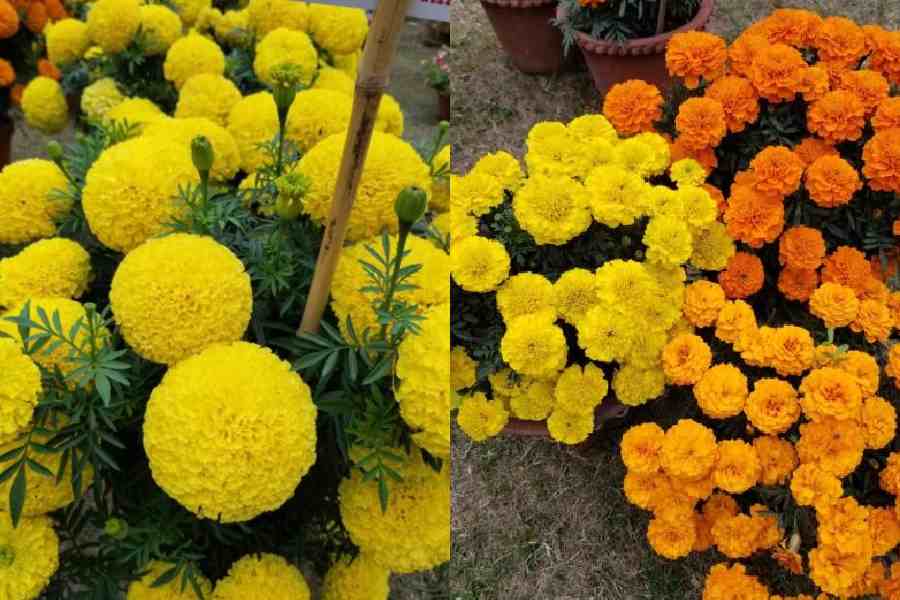Bright, beautiful, low-maintenance and popular. That’s the Marigold for you.
A member of the Tagetes species, the Marigold is a genus in the Sunflower or Aster family. They are annuals and very easy to grow, with abundant blooms throughout winter in India.
Flower in flower
These low-maintenance plants thrive in full sun. Marigolds are composite flowers ranging in size from medium to large and measuring approximately 1 to 2.5 inches in diameter. Depending on the variety, the showy blossoms can grow in a pom-pom, anemone, or daisy-shape.
Marigolds are yellow-blooming flowers. They vary in colour from yellow to oranges and red hues, sometimes with striped or bicolor petals. Marigolds comprise of tiny florets surrounded by many layers of delicate, messy petals and a thick hollow stem with fern-like leaves.
The flowers have a pungent, sharp, and musky aroma, a robust citrusy flavor with a peppery and bitter finish. They have very little insect and disease problems. The plants are native to Mexico and Central America. Its botanical name is Tagetes erecta/ Tagetes patula.
Three types of Marigolds can be found in cultivation today —
]American Marigold (Tagetes erecta): these are tall plants, growing up to 3ft high, though breeding has produced dwarf verities. They have large, fully double flowers in yellow, gold, and orange.
]French Marigolds (Tagetes patula): these are bushier and more compact, with smaller flowers.
]Triploids: This one is a cross between French and American Marigolds. They resemble French Marigolds but have larger flowers
Marigolds are edible and used medicinally as well. Marigold florets contain antifungal, antibacterial, and anti-inflammatory properties that have been shown to be effective at treating sore throat and mouth sores, especially when added to tea and gurgled.
Temperature: Marigolds require a temperature of around 15-20°C for growth. October to April is the best flowering time in the plains of Bengal. They grow best in full sun with moist, well-drained soil, though they will tolerate drier conditions. They do not like acidic soil. They also don’t need soil that is particularly rich in organic matter.
Water: Do not water these plants too much as this can damage them. Water the plants when the top layer starts drying. While watering, avoid watering from the top. This could damage the flowers and leaves. If dust settles on the plant, shower it when sunny, so that the water dries up immediately. Do this once or twice a month.
Fertiliser: Marigold plants do not like much fertiliser. If you apply fertiliser frequently, it will take vigorous foliar growth and produce fewer flowers. Until the flowers bloom, do not fertilse these plants. Apply a balanced fertiliser and liquid-mastered cake fertiliser once a month. Keep the pot in a place that is sunny almost all day. This will keep these flowers healthy and make them bloom well.
Propagation: Marigolds can be grown from seeds or can be planted from cuttings. Growing a Marigold plant is very easy either way but it is easiest from seeds.
Pests: Marigolds have few pests or problems overall, but spider mites and aphids sometimes infest the plants. Spray Marigolds with neem oil once a month to avoid mites. Sometimes, the plants may be affected by fungal diseases such as powdery mildew if conditions are too wet. Snails and slugs may attack the plant too, especially young plants. Keep the soil free of weeds and set out traps for them.
